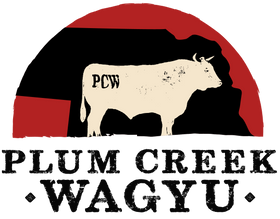How to Render Wagyu Fat and Use It in Your Cooking
Wagyu beef is prized for its rich marbling, but the benefits of this luxurious meat go beyond the steak itself. The high-quality fat found in Wagyu is packed with flavor and can be rendered into a versatile cooking ingredient. Whether you use it for frying, roasting, or finishing dishes, rendered Wagyu fat adds depth and richness to your favorite recipes. Here’s how to render it properly and make the most of every drop.
What Is Wagyu Fat?
Wagyu fat is softer and more buttery than regular beef fat due to its high levels of monounsaturated fats and oleic acid. This unique composition gives it a lower melting point, making it ideal for rendering and cooking.
How to Render Wagyu Fat
Rendering is the process of melting fat down into a liquid form that can be stored and used in cooking. Follow these simple steps to do it at home:
1. Collect the Fat
-
Trim excess fat from Wagyu steaks, roasts, or brisket.
-
Chop the fat into small pieces to help it melt evenly.
2. Heat Slowly
-
Place the fat in a heavy-bottomed pan or cast-iron skillet.
-
Cook over low heat to prevent burning, stirring occasionally.
-
As the fat melts, it will separate into a golden liquid with small crispy bits (cracklings).
3. Strain and Store
-
Once fully melted, strain the liquid fat through a fine-mesh sieve or cheesecloth to remove solids.
-
Store in an airtight jar or container in the fridge (lasts up to 3 months) or freezer (lasts up to a year).
Ways to Use Rendered Wagyu Fat in Cooking
Rendered Wagyu fat is a powerhouse ingredient that enhances flavor and texture in many dishes.
🔥 Frying & Sautéing – Use Wagyu fat instead of butter or oil for frying eggs, hash browns, or vegetables.
🔥 Roasting Meats & Veggies – Toss potatoes, carrots, or Brussels sprouts in Wagyu fat before roasting for a crispy, flavorful finish.
🔥 Making Wagyu Butter – Whip rendered fat with softened butter and fresh herbs for a rich finishing touch on steaks and bread.
🔥 Enhancing Sauces & Gravies – Stir into pan sauces or gravies for an extra boost of umami.
🔥 Cooking Rice & Pasta – Add a spoonful to rice or pasta for a luxurious depth of flavor.
Final Thoughts
Wagyu fat isn’t just a byproduct—it’s a culinary goldmine. By rendering and using it in your cooking, you can elevate everyday dishes with deep, beefy richness.
Looking for high-quality Wagyu? Order from Plum Creek Wagyu and experience the full flavor of premium beef—right down to the last drop of fat!
Related Posts
Wagyu Tallow: Creative Uses in the Kitchen
Discover creative uses for Wagyu tallow in the kitchen! From frying to baking, learn how Wagyu tallow enhances flavor and texture in your favorite recipe!
The Best Wagyu Cuts for Every Cooking Style: Ribeye, Sirloin, Brisket, and More
Discover the best Wagyu cuts for every cooking style! Whether you’re grilling ribeye, slow-cooking brisket, or pan-searing filet mignon, learn which cuts of Wagyu are perfect for your next recipe.
Wagyu on the Grill: Tips for BBQ Perfection
Grill Wagyu like a pro with these expert BBQ tips. From selecting the right cut to mastering the sear, learn how to cook Wagyu beef to perfection on the grill.
Mastering the Perfect Wagyu Steak at Home: A Step-by-Step Guide
Learn how to cook the perfect Wagyu steak at home with this step-by-step guide. From choosing the right cut to mastering the sear, discover how to make Wagyu beef a delicious, melt-in-your-mouth experience.
The Science Behind Wagyu Marbling: Genetics, Feeding, and Flavor
Discover the science behind Wagyu marbling—how genetics, slow feeding, and stress-free ranching create the rich, buttery texture and unmatched flavor of premium Wagyu beef.
How Weather Affects Wagyu Beef Production: The Role of Climate in Raising Premium Cattle
Discover how weather impacts Wagyu beef production. From heat stress to winter feeding strategies, learn how climate affects marbling, cattle health, and the quality of premium Wagyu beef.








